Continuation of previous posts Café Terrace at night, in Arles and Starry Night over the Rhône
We left Vincent Van Gogh in September 1888, after he painted his Starry Night over the Rhône in Arles. On October 23rd, Paul Gauguin joined him in the “Yellow House” which he rented and where he stayed for two months. The cohabitation between these two geniuses of painting is not easy. Apart from quarrels of a domestic nature, things went badly wrong on 23 December 1888, after a discussion on painting during which Gauguin argued that one should work with imagination, and Van Gogh with nature. According to the classical thesis, Vincent threatens Paul with a knife; the latter, frightened, leaves the scene. Finding himself alone in a fit of madness, Vincent cuts off a piece of his left ear with a razor, wraps it in newspaper and offers it to an employee of the neighbouring brothel. Then he goes to bed. The police doesn’t find him until the next day, his head bloody and confused. Gauguin explains the facts to them and leaves Arles. He will never see his friend again.
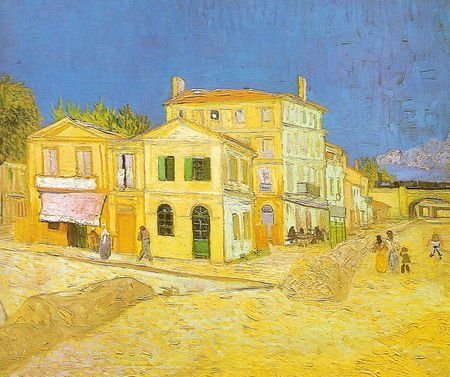
The day after his crisis, Van Gogh was admitted to hospital. A petition signed by thirty people demanded his internment in asylum or expulsion from the city. In March 1889, he was automatically interned in Arles hospital by order of the mayor while continuing to paint, and on 8 May he left Arles, having decided to undergo psychiatric treatment in the insane asylum at Saint-Paul-de-Mausole, a little south of Saint-Rémy-de-Provence. He stayed there for a year (until May 1890), subject to three bouts of dementia, but between which his pictorial production was extraordinarily rich: he produced 143 oil paintings and more than 100 drawings in the space of 53 weeks.
One of the key works of this period is the Starry Night, now in the Museum of Modern Art in New York.
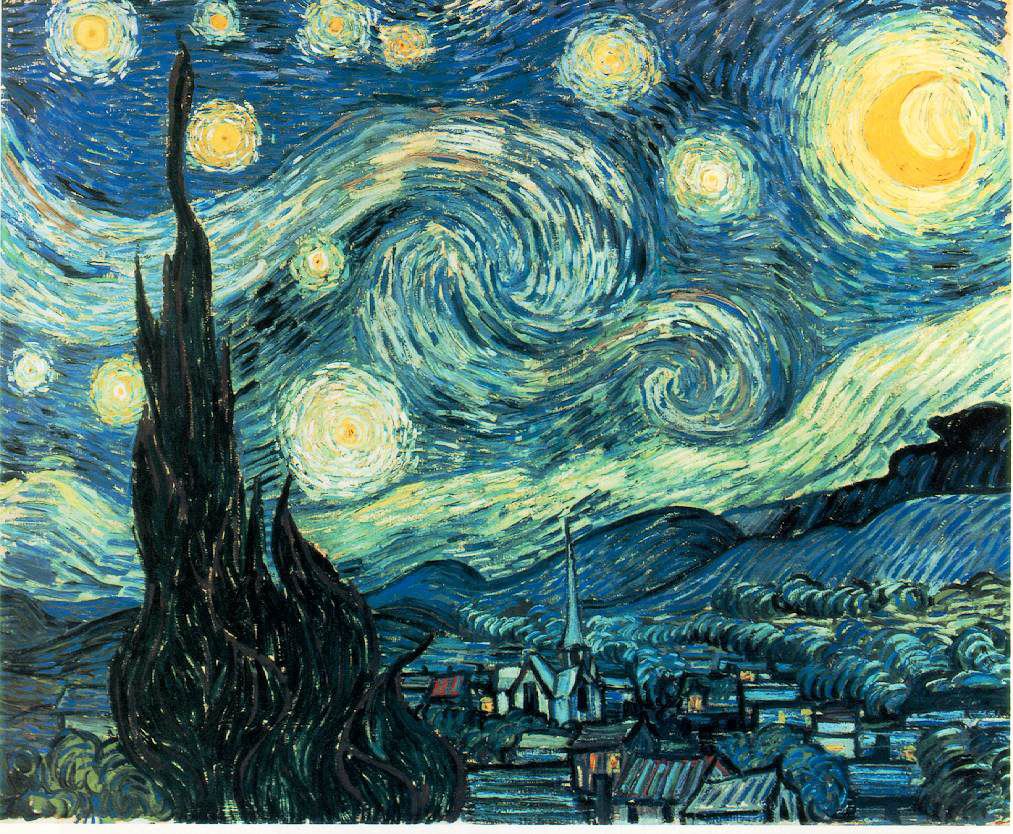 I have always been fascinated by this nocturnal painting, with its tormented sky in the background, composed of volutes, whirlpools, huge stars and a crescent moon surrounded by a halo of light. In the background, a village with a church steeple overstretched towards the sky, which at first glance is thought to be the village of Saint-Rémy-de-Provence. Due to the position of the moon, the orientation of its crescent horns and the streak of whitish mist over the hills, one does not need to be a great expert to see at first glance that the Starry Night represents a sky just before dawn. Can we go further?
I have always been fascinated by this nocturnal painting, with its tormented sky in the background, composed of volutes, whirlpools, huge stars and a crescent moon surrounded by a halo of light. In the background, a village with a church steeple overstretched towards the sky, which at first glance is thought to be the village of Saint-Rémy-de-Provence. Due to the position of the moon, the orientation of its crescent horns and the streak of whitish mist over the hills, one does not need to be a great expert to see at first glance that the Starry Night represents a sky just before dawn. Can we go further?
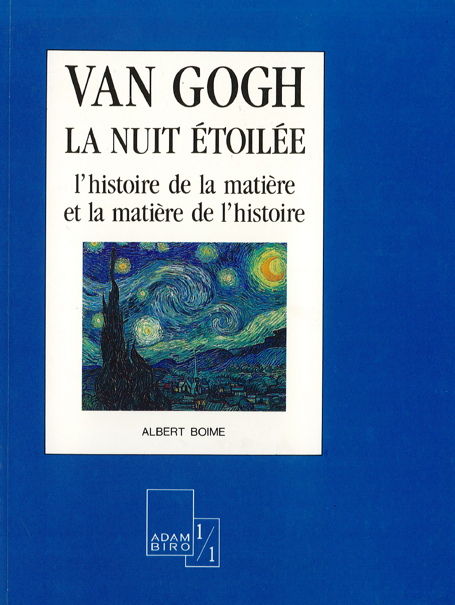 In 1995, while snooping around in a bookshop in Paris, I stumbled upon a booklet entitled La Nuit étoilée: l’histoire de la matière et la matière de l’histoire. It was the French translation of an article booklet published in 1984 in the United States by Albert Boime (1933-2008), professor of art history at the University of California at Los Angeles (“Van Gogh’s Starry Night: A History of Matter and a Matter of History, Arts Magazine, December 1984).
In 1995, while snooping around in a bookshop in Paris, I stumbled upon a booklet entitled La Nuit étoilée: l’histoire de la matière et la matière de l’histoire. It was the French translation of an article booklet published in 1984 in the United States by Albert Boime (1933-2008), professor of art history at the University of California at Los Angeles (“Van Gogh’s Starry Night: A History of Matter and a Matter of History, Arts Magazine, December 1984).
The book is fascinating. The author raises many questions which he tries to answer, notably concerning the date of the painting’s execution and the nature of the astronomical objects represented.
I said in previous posts that Van Gogh painted from nature, and therefore intended to reproduce the night skies as he saw them at the precise moment he began his paintings. I have shown how his Café le soir (Café Terrace at night ) and his Nuit étoilée au-dessus du Rhône (Starry Night over the Rhône), painted in Arles, showed the striking realism he displayed in his pictorial transposition of the firmament. This realism is less obvious in the Starry Night of Saint-Rémy, with its immense sky full of luminous objects, this moon and these far too big stars scattered among vast swirling volutes. Could his representations of the sky have slipped from realism to the wildest imagination, or even to delirium in front of the easel, to the rhythm of his own psychic deterioration?
To answer this question, we must investigate the precise genesis of the work. If, thanks to an astronomical reconstruction, we find a sky identical or close to the one represented in the painting – as was the case with his Arlesian nocturnal works – then we will have proved the realism of the painting, in addition to having dated the sketch to the day and hour.
On this subject, Albert Boime wrote: “On June 19, 1889, Vincent, all elated, wrote to his brother Theo that he had finally painted his Starry Night “, and on this basis he asked the director of the Griffith Park Observatory in Los Angeles for a reconstitution of the sky. The result confirmed his idea that Van Gogh had painted the sky he could see from his room at dawn on 19 June.
As I said, there is no doubt that it was early in the morning: the streak of white mist over the hills, the crescent moon illuminated from below indicates that the sun is still below the horizon in the lower left corner. On the other hand, the star shining just above the mist can only be Venus, the morning star that emerges in the East a little before the star of the day. Now Van Gogh’s room is well oriented to the East, since in a letter sent to his brother Theo between May 31 and June 6 he wrote “This morning I saw the countryside from my window a long time before sunrise with nothing but the morning star, which looked very big “. As for the two stars touching the top of the cypress tree on either side, they seem to correspond to Hamal and Sheratan, the main stars of the constellation of Aries.
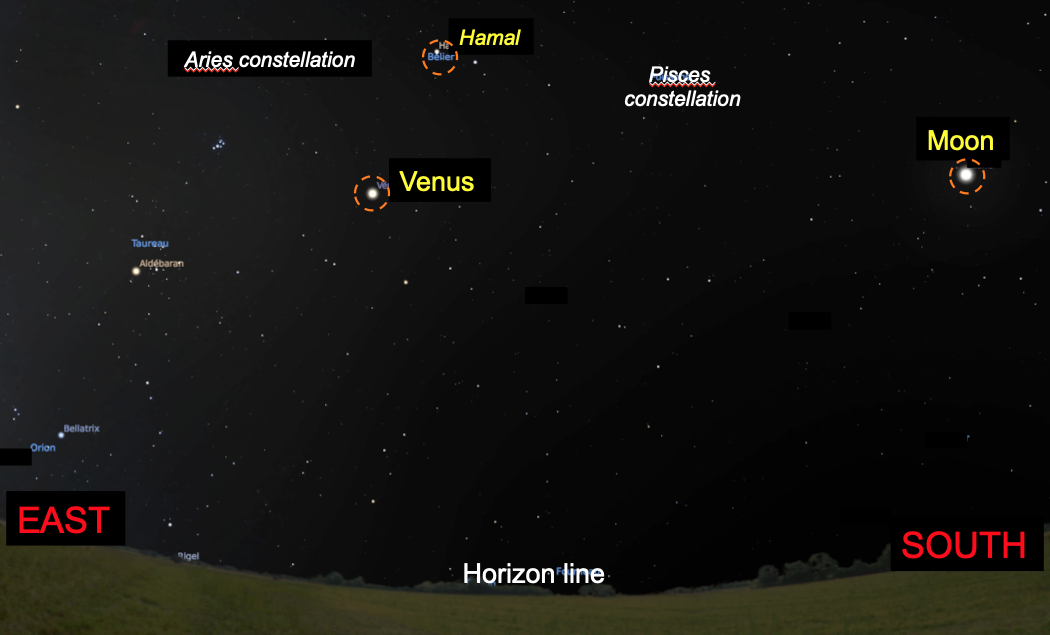
However, Boime notes an important difference concerning the phase of the Moon: on 19 June it was between the half moon and the third quarter, thus resembling more a rugby ball than the fine crescent represented by Van Gogh. But he firmly believes in his reconstitution.
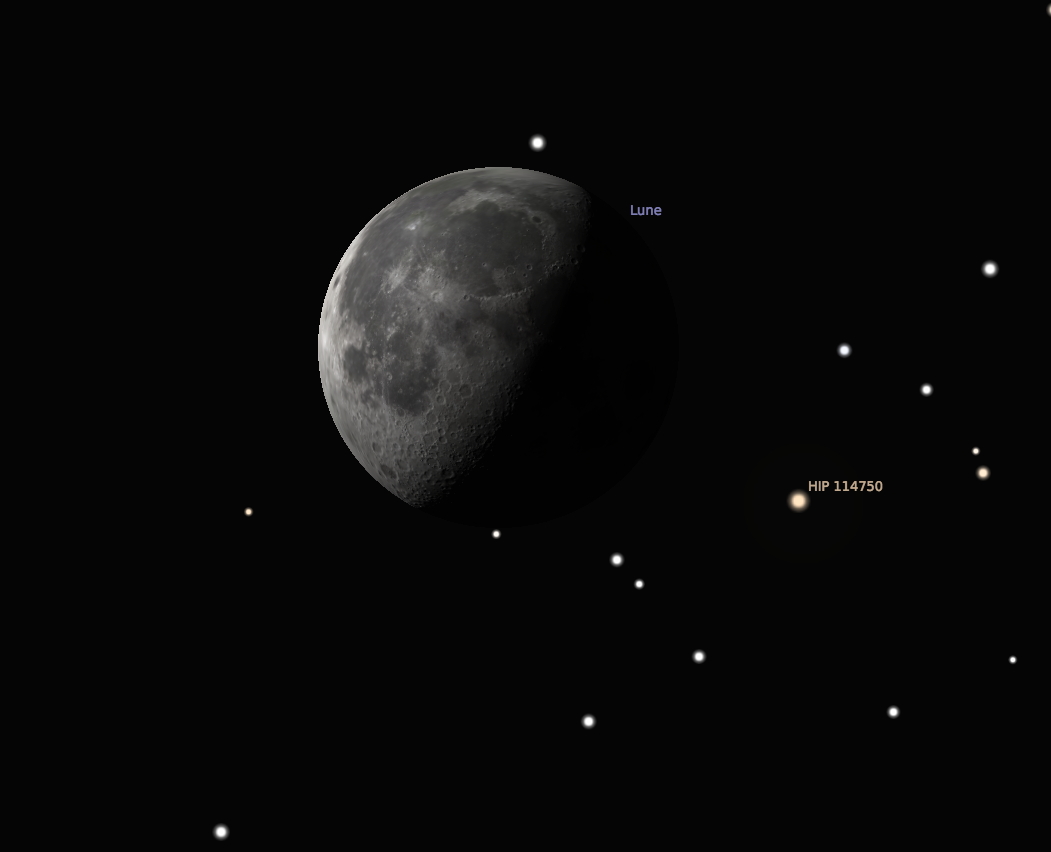
In turn, I wondered about the date of the initial composition of the preparatory painting or drawing, assuming that Van Gogh had painted a real configuration fairly faithfully. Having been so precise in depicting Venus and the stars of Aries, why would he have taken the liberty of not respecting the aspect of the Moon? Other anomalies in the reconstitution of June 19th left me perplexed. Firstly, Venus was higher on the horizon – almost at the same level as the crescent Moon, whereas in the painting it is clearly below. Secondly, it is pointing South-East and not East. The window of Van Gogh’s room, which was oriented towards the East and had a rather narrow opening, looked rather towards Aldebaran, the bright star of the Taurus constellation. Finally, on 19 June Venus was to the left of the two stars of Aries and the cypress, whereas in the painting it is to the right.
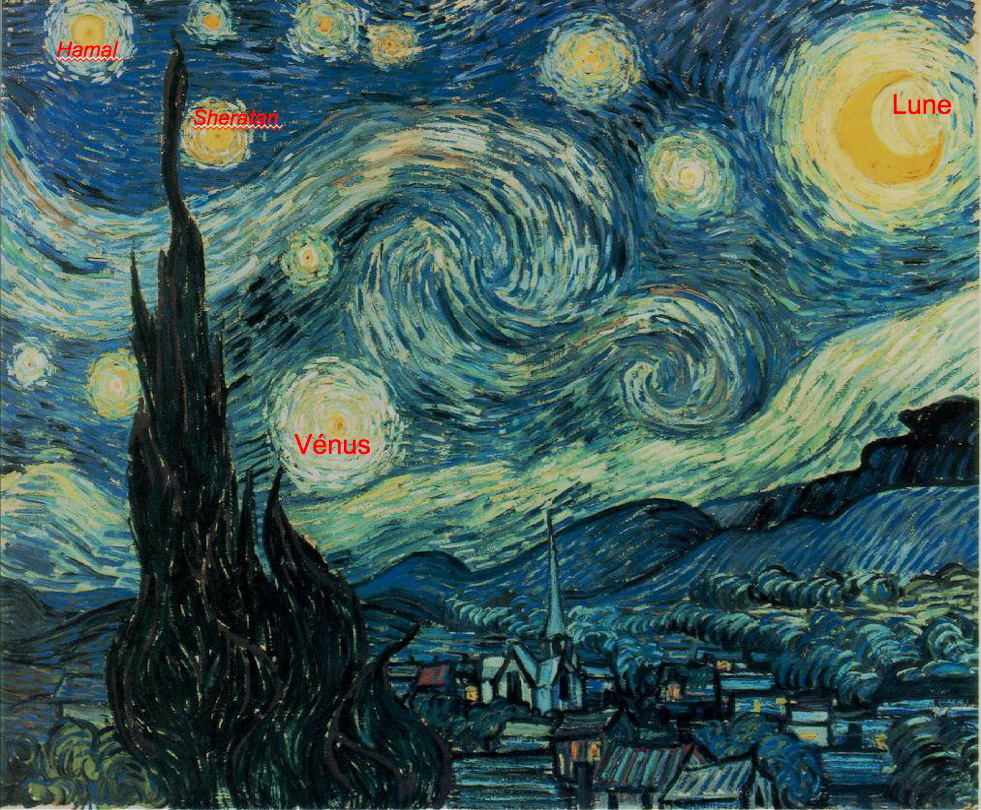
With so many deviations from celestial reality, was it necessary to accept Boime’s hypothesis? All the more so as, reading the original letter of Vincent to Theo where Boime reports that “Vincent, all elated, wrote to his brother Theo that he had finally painted his Starry Night“, we actually find this sober mention: “I have a landscape with olive trees and also a new study of the starry sky“. No more … Boime had visibly over-interpreted the excerpt to suit his thesis! Especially since the letter is actually dated 18 and not 19, and it seems logical that Vincent did not paint his starry night on the same day.
In 1986, the American astronomer Charles Whitney published an article “The Skies of Vincent Van Gogh” (Art History, vol.9, Sept. 1986, pp.351-362) in which he considered that the scene combined the observations of several nights, rather than resulting from the sight of a single night. This way of working, however, was alien to Van Gogh’s methods. Convinced that the artist painted his canvas on the morning of his letter, Boime wrote, “Since this letter is postmarked June 19, it is generally assumed that the painting and the letter date from the previous night. In doing so, however, the possibility that the painter may have worked in the early morning is overlooked ».
Concerning the landscape, Boime considered that the hills depicted (part of the Alpilles chain) are those seen from Van Gogh’s room, and that the village is indeed that of St-Rémy-de-Provence with its church of Saint-Martin, while acknowledging that the latter was invisible from the said room, as it is situated in the northern direction.
For my part, I felt that such a painting could not be done in a single day. Van Gogh certainly had an abundant pictorial production, but it is known that he always worked on several canvases simultaneously, the complete realisation taking more than a week. In a letter of 9 June he wrote to Theo, for example, ” I have two landscapes on the go (no. 30 canvases) of views taken in the hills“, on 25 June ” I’ve got some more canvases on the go, so that there are 12 no. 30 canvases on the stocks” (the starry night being one of the twelve mentioned), and above all on 2 July ” So that you may have an idea of what I have on the go I’m sending you ten or so drawings today, all after canvases on the go.” These drawings include a magnificent pencil reproduction of the Starry Night, which was perhaps not quite finished in its oil version.
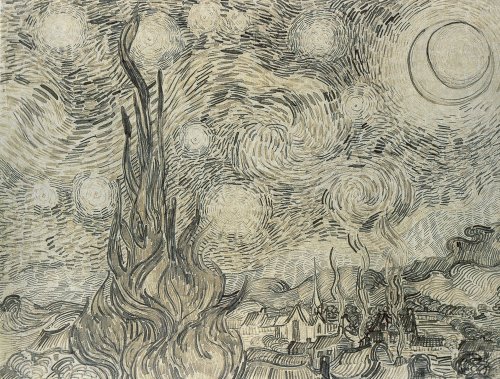
All this led me to consider that Van Gogh had been able to pose the first pictorial elements of his painting a few days, even weeks before June 19th.
In 1995, thanks to an astronomical software on my personal computer, I was able to calculate the maps of the sky seen from Saint-Paul-de-Mausole towards the East for each night preceding the date of 19 June 1889, and I found that on 25 May 1889 at 4.40 am local time, the sky towards the East had fleetingly (let’s say for 15 minutes) presented a configuration remarkably close to the one painted by Van Gogh : the brilliant planet Venus preceding the Sun but still low below the horizon and correctly situated to the right of the cypress tree, the fine crescent Moon illuminated from below in the right proportion, five stars from the constellation of Aries, including Hamal and Sheratan on either side of the tip of the cypress tree, and two brilliant stars from the constellation of Pisces (between the Moon and Venus).
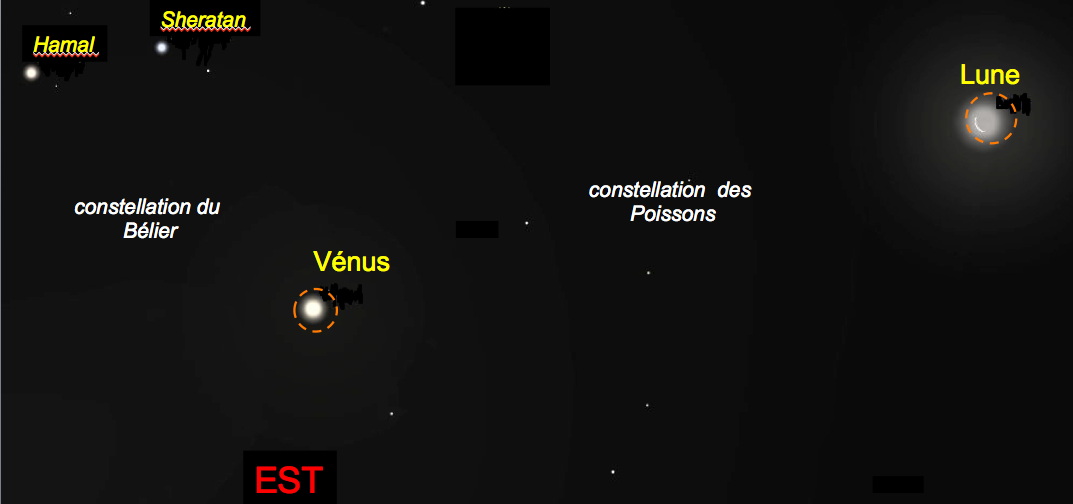
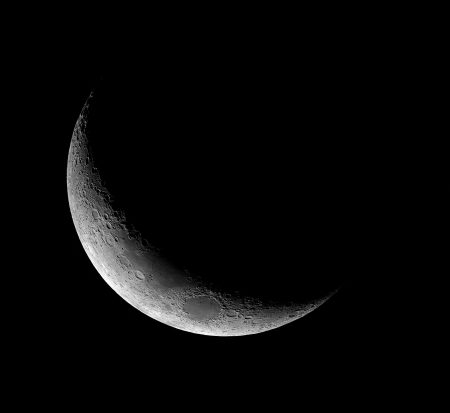
The superimposition below between Van Gogh’s painting and the real sky of May 25th, where I have enlarged the size of the stars and the crescent moon to make them more visible, is so striking that, despite a few small deviations, it is difficult to see it as pure chance. Moreover, no other celestial configuration calculated between May 25 and June 19 reproduces the painting so faithfully.
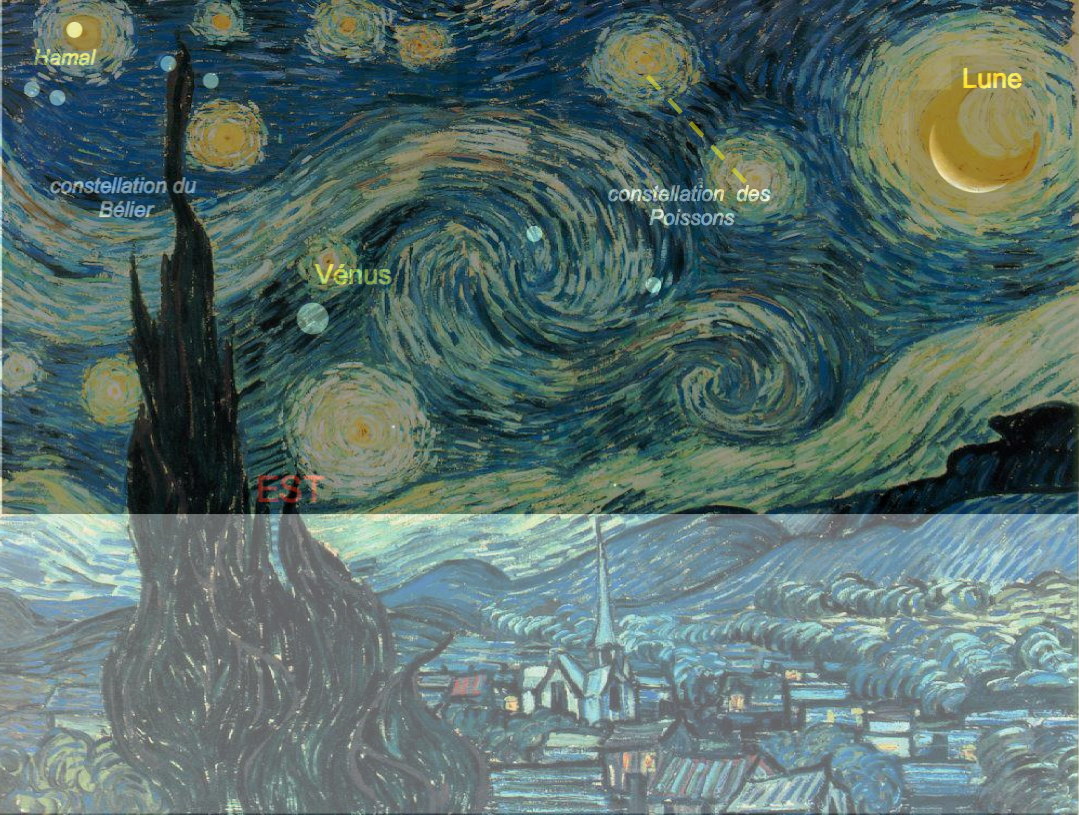
The investigation did not stop there. Boime also made a much more astonishing hypothesis for interpreting the great serpentine movement crossing Van Gogh’s sky. According to him, the artist had reproduced, according to documents of the time, either a comet tail (much attention was paid to it in the 1880s) or the spiral nebula now known as the Whirlpool Galaxy in the constellation of Canes Venatici, number M51 in the Messier catalogue, which the Irish astronomer William Parsons (Lord Rosse) had drawn in 1845 from a telescope observation (this was before the advent of astronomical photography). This spectacular drawing, which had become famous, had been reproduced many times in popular literature, notably in the famous Astronomie Populaire that Camille Flammarion had published in 1881. Boime, and in his wake other authors, suggested that Van Gogh, who was passionate about astronomy, was a reader of Flammarion, even having met him when he was still living in the Paris region.
It is true that the comparison is quite convincing, but the Whirlpool nebula does not appear at all in this region of the sky.
For my part, obviously seduced by this interpretation, I had the idea of looking for what type of celestial object the astronomical software indicated at the location of the whirlpool represented by Van Gogh. There is in fact another spiral galaxy, located in the Pisces constellation. Discovered in September 1780 by the French astronomer Pierre Méchain and numbered 74 in the Messier catalogue, it is also known as the “Phantom Galaxy”.
M74 is invisible to the naked eye (magnitude 9.7) but can be detected with a medium-power telescope and photographed with a sufficiently long exposure time. Moreover, Lord Rosse had drawn it on the same page as the Whirlpool nebula, and it was as “popular” as this one. Her image is that of a spiral seen from the front, also very similar to Van Gogh’s whirlwind.
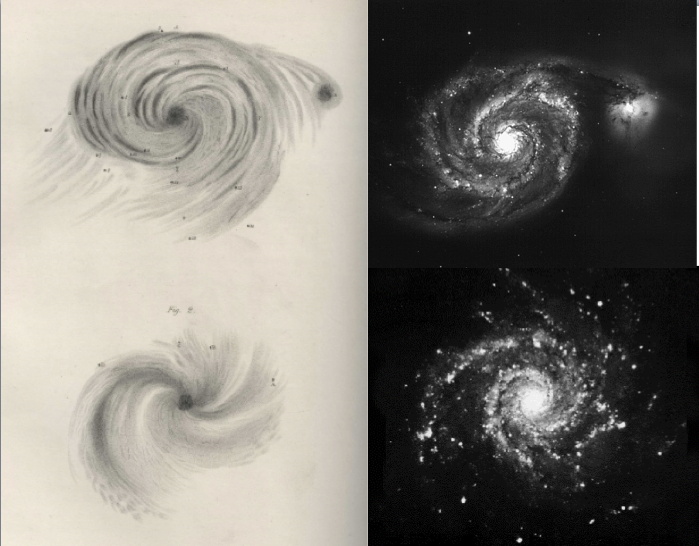
Therefore, supposing Van Gogh’s pictorial realism with regard to the Moon, Venus and the stars, why not go all the way and hypothesise that he had also represented the Phantom Galaxy in the right place?
Of course, we should not conclude that he was gifted with a supernatural view. Taking up part of Boime’s thesis, I wrote: “As his correspondence indicates, he was quite simply passionate about celestial things. An avid reader of the popular magazine L’Astronomie published by Camille Flammarion, he had discovered with wonder the first photographs of spiral nebulae – those ” blue-white milky ways” he talks about in his correspondence. We also know that he had read the Astronomie Populaire of 1881, and the study on Venus that Flammarion had published in March 1889 in the journal l’Illustration. »
I concluded my study by saying that this demonstrated the positional realism that Van Gogh had always shown in his depictions of starry nights, and that it was moving to know within a few minutes the day and time when he had for the first time recorded the luminous points of the Provençal sky on his blank canvas.
Rather satisfied with my reconstruction, I began to talk about it in several television documentaries devoted to Van Gogh,
Extract from the documentary “Vincent Van Gogh, the Evangelist” by Valérie Manuel and Annie Zorz (2000) – in French
Excerpt from the documentary “Dans le champ des étoiles (In the Field of Stars)”, directed by D. Jaeggi, 52 mn, La Cinquième/Musée d’Orsay (2001) – in French
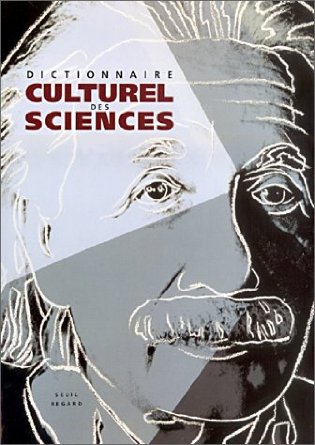 and I published in 2001 an article in the excellent Dictionnaire Culturel des Sciences, edited by Nicolas Witkowski. My thesis made its way, and it became generally accepted that Van Gogh had painted the earthly and celestial landscapes as he had seen them from his bedroom window in the early morning of 25 May 1889 – with the exception of the village of Saint-Rémy of course.
and I published in 2001 an article in the excellent Dictionnaire Culturel des Sciences, edited by Nicolas Witkowski. My thesis made its way, and it became generally accepted that Van Gogh had painted the earthly and celestial landscapes as he had seen them from his bedroom window in the early morning of 25 May 1889 – with the exception of the village of Saint-Rémy of course.
We could leave it at that, and in fact we stayed there for almost 20 years. My reconstruction is mentioned in dozens of newspaper and magazine articles published since 2001 in France and abroad, on the web and in the French Wikipedia page dedicated to the Starry Night...
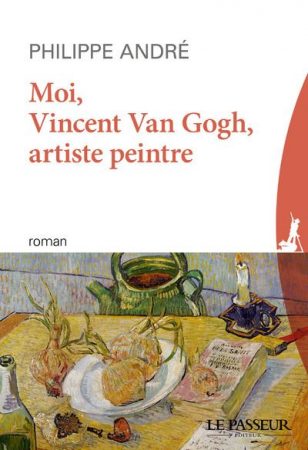 However, in September 2016, now settled in Marseille, I went for the first time to the monastery of Saint-Paul-de-Mausole to visit the place (which Albert Boime hadn’t done), and make topographical reconstructions that left me perplexed. Then, in 2018, I had access for the first time to the complete correspondence of Vincent Van Gogh, and I began to exchange views with my childhood friend and psychiatrist Philippe André. In July he published a short article judiciously entitled C’est en Provence que le talent de van Gogh s’est transformé en génie (« It’s in Provence that van Gogh’s talent turned into genius »), but above all the excellent novel « Moi, Vincent Van Gogh, artiste peintre », based on the psychology of the artist that emerges from his correspondence. And the least we can say is that my investigation had to be started almost from scratch.
However, in September 2016, now settled in Marseille, I went for the first time to the monastery of Saint-Paul-de-Mausole to visit the place (which Albert Boime hadn’t done), and make topographical reconstructions that left me perplexed. Then, in 2018, I had access for the first time to the complete correspondence of Vincent Van Gogh, and I began to exchange views with my childhood friend and psychiatrist Philippe André. In July he published a short article judiciously entitled C’est en Provence que le talent de van Gogh s’est transformé en génie (« It’s in Provence that van Gogh’s talent turned into genius »), but above all the excellent novel « Moi, Vincent Van Gogh, artiste peintre », based on the psychology of the artist that emerges from his correspondence. And the least we can say is that my investigation had to be started almost from scratch.
I explain why in the next post.
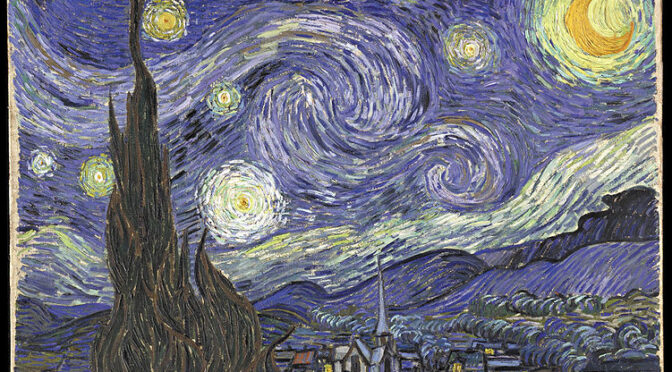
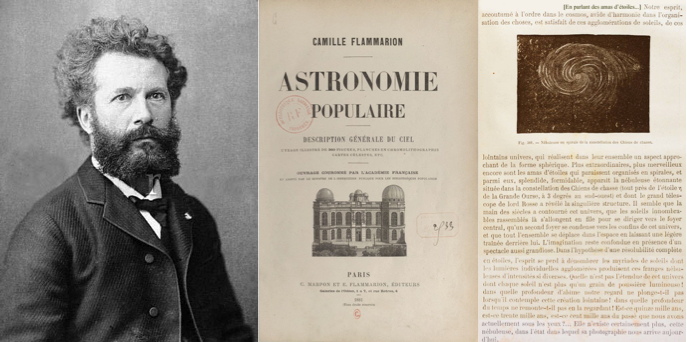
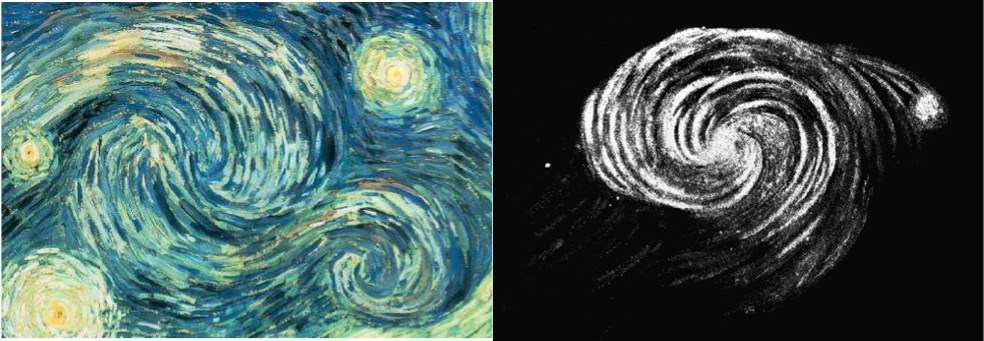
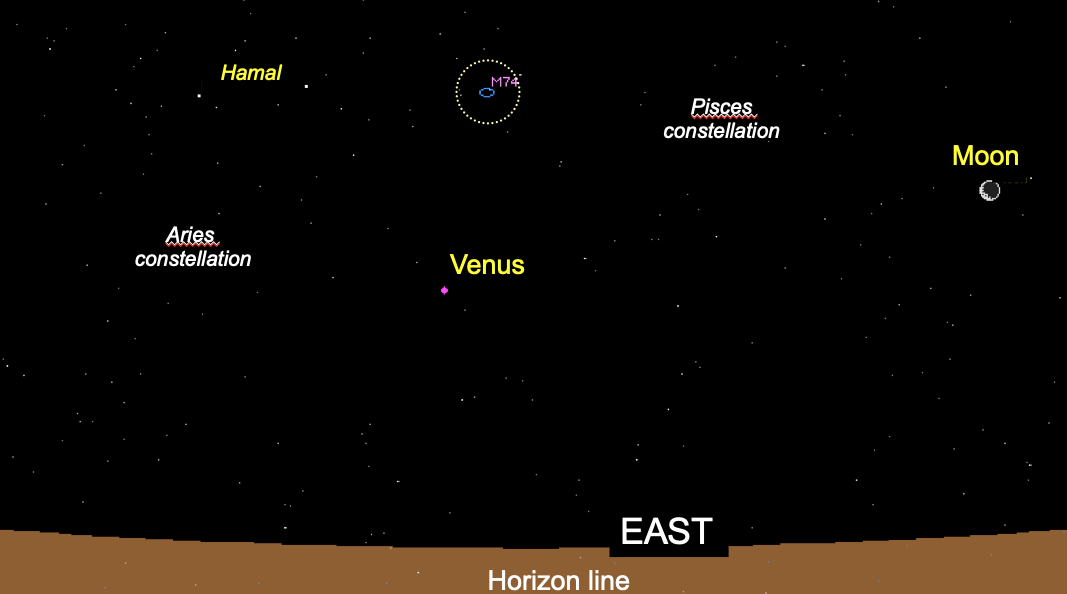
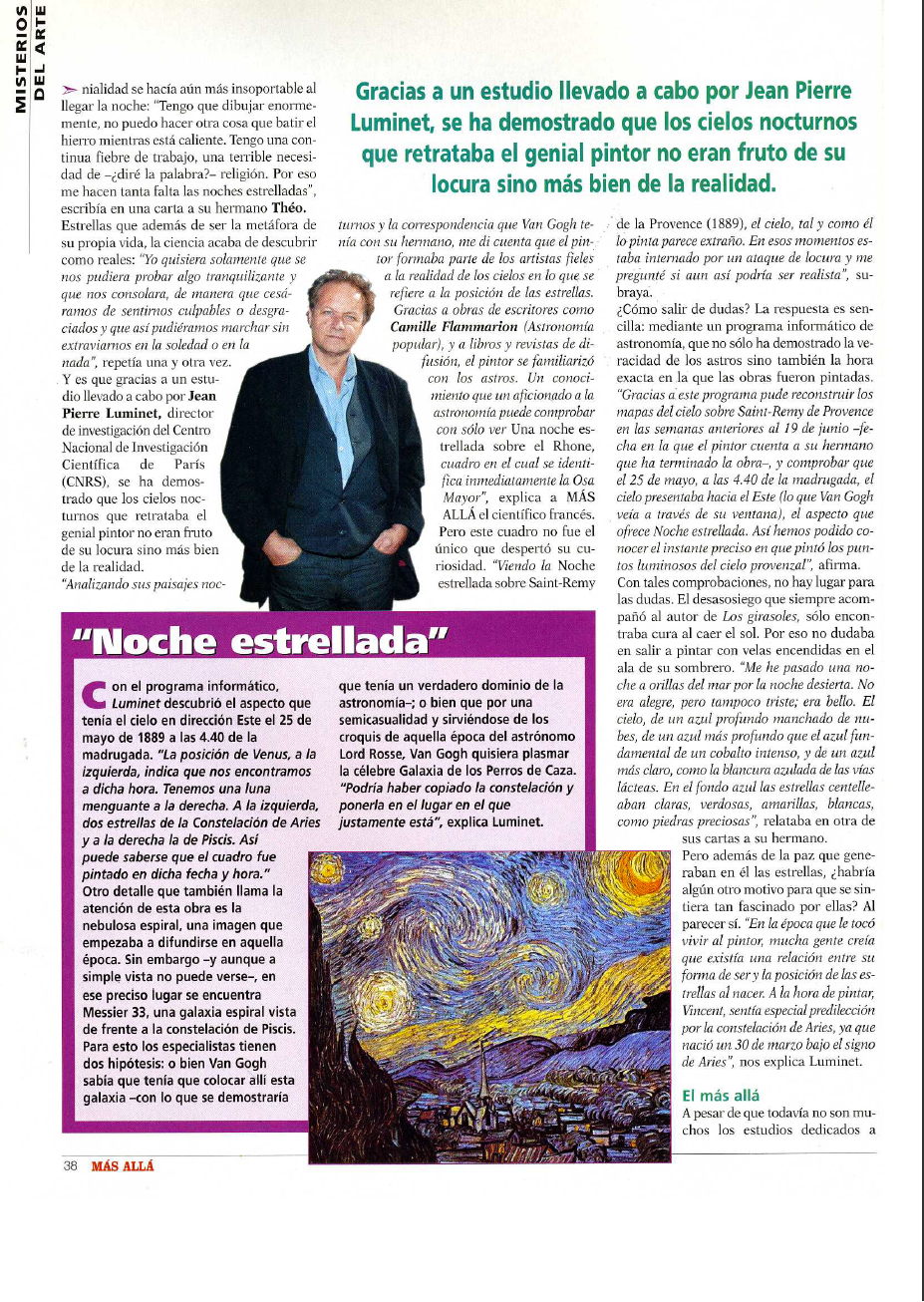
mystery mystery!! What hasJean Pierre found out in the latest revelation in the quest to understand the meaning and astronomical truth behind this great masterpiece, ! AWAITING THE NEXT INSTALMENT! I found his work to date amazing on all subjects and his blending of scientific knowledge and Art History a true revelation in itself! Jean Pierre Luminet is a real modern day renaissance man
Thank you Gerald for your appreciation. Indeed I have two other revelations about Van Gogh’s paintings, I have just to find time to write them in English (they are in French on my francophone blog). Patience, it will come!
Hi Gerald. Eventually I published a further analysis of Van Gogh’s paintings.
Hello, Nice article. Can you tell me why you have the constellation Aries in a different location than Boime’s as mentioned in 1984?